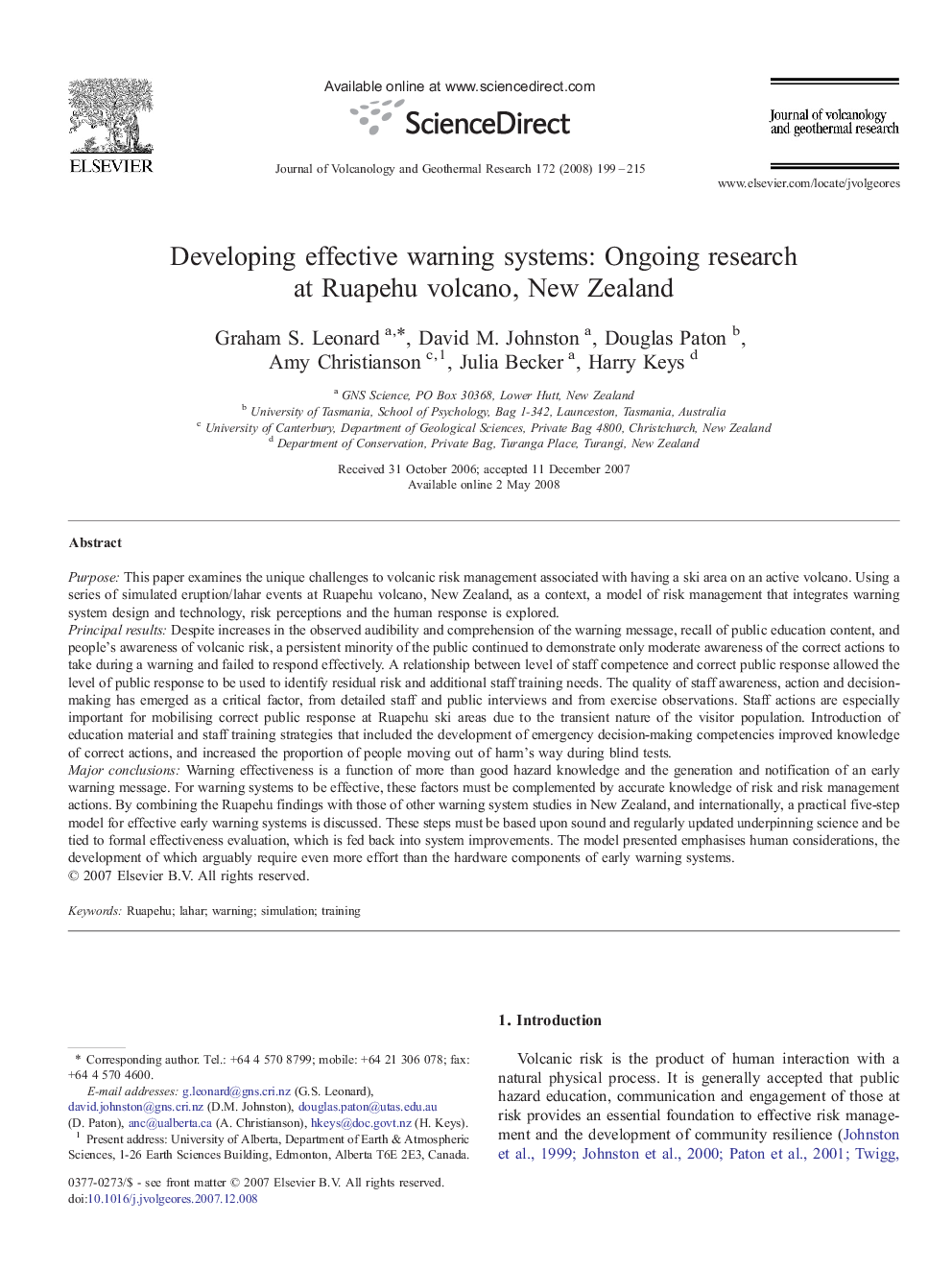| کد مقاله | کد نشریه | سال انتشار | مقاله انگلیسی | نسخه تمام متن |
|---|---|---|---|---|
| 4714547 | 1638449 | 2008 | 17 صفحه PDF | دانلود رایگان |

PurposeThis paper examines the unique challenges to volcanic risk management associated with having a ski area on an active volcano. Using a series of simulated eruption/lahar events at Ruapehu volcano, New Zealand, as a context, a model of risk management that integrates warning system design and technology, risk perceptions and the human response is explored.Principal resultsDespite increases in the observed audibility and comprehension of the warning message, recall of public education content, and people's awareness of volcanic risk, a persistent minority of the public continued to demonstrate only moderate awareness of the correct actions to take during a warning and failed to respond effectively. A relationship between level of staff competence and correct public response allowed the level of public response to be used to identify residual risk and additional staff training needs. The quality of staff awareness, action and decision-making has emerged as a critical factor, from detailed staff and public interviews and from exercise observations. Staff actions are especially important for mobilising correct public response at Ruapehu ski areas due to the transient nature of the visitor population. Introduction of education material and staff training strategies that included the development of emergency decision-making competencies improved knowledge of correct actions, and increased the proportion of people moving out of harm's way during blind tests.Major conclusionsWarning effectiveness is a function of more than good hazard knowledge and the generation and notification of an early warning message. For warning systems to be effective, these factors must be complemented by accurate knowledge of risk and risk management actions. By combining the Ruapehu findings with those of other warning system studies in New Zealand, and internationally, a practical five-step model for effective early warning systems is discussed. These steps must be based upon sound and regularly updated underpinning science and be tied to formal effectiveness evaluation, which is fed back into system improvements. The model presented emphasises human considerations, the development of which arguably require even more effort than the hardware components of early warning systems.
Journal: Journal of Volcanology and Geothermal Research - Volume 172, Issues 3–4, 20 May 2008, Pages 199–215